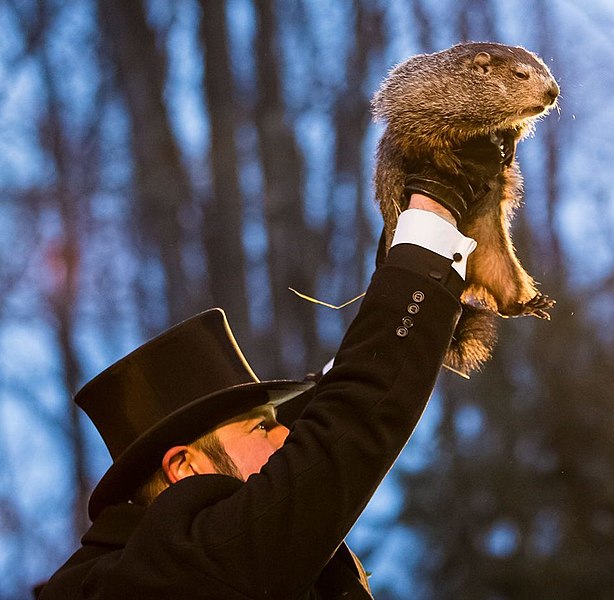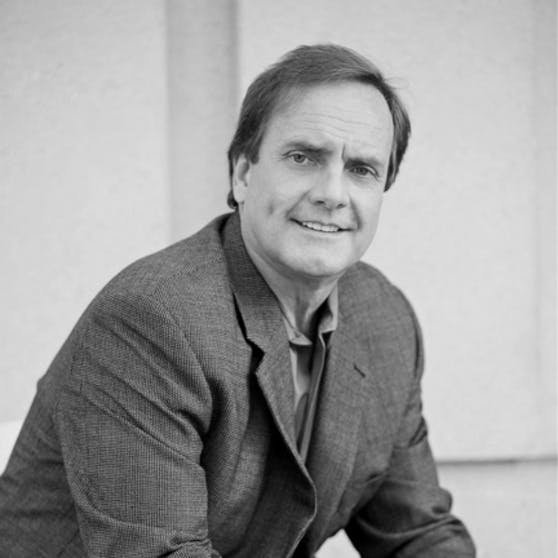by Philip Jett
There are King Kong, Godzilla, and Bigfoot, all powerful, mythical creatures, but they suffer from the same weakness—none can predict the weather. And that’s where Pennsylvania’s most famous critter shines—the Marmota monax, better known as the woodchuck, whistle pig, and groundhog, or more popularly by its stage name—Punxsutawney Phil.

This file is licensed under the Creative Commons Attribution-Share Alike 4.0 International license.
Native Americans called the groundhog “the digger,” and dig they do. Averaging fifteen pounds and just under two feet, the large rodent can dig a plate-sized burrow that penetrates six feet into the ground and traverses more than fifty feet in any direction. The holes can damage foundations, cause erosion, and injure horses and livestock. As a herbivore, it also feasts on farmers’ crops and backyard garden vegetables. In fact, a groundhog isn’t really beneficial at all, that is to say, an ordinary groundhog—but an extraordinary groundhog that can magically predict the weather, now that is a different story entirely.
Groundhog Day originated in the United States when Dutch immigrants from Germanic areas of Europe settled in Pennsylvania. They brought with them the tradition of Candlemas, when clergy would bless and dole out candles to the villagers equal to the number of days the clerics believed winter would continue. The custom took place every February 2, which is approximately halfway between the winter solstice and spring equinox. Eventually, Germans replaced the holy men with holey animals—hedgehogs—to predict winter’s duration. When the tradition landed in North America, Canadians and Americans discovered that there were no hedgehogs, so they turned to the groundhog as a suitable replacement.
Though the tradition was recognized much earlier, the first mention of “ground-hog day” that I located in Pennsylvania newspapers was from the Johnstown Mountain Echo on February 3, 1852. The newspaper described the observance much as we do today:
The 2d of February is known to our natives of the mountain by the not very euphonious name of ground-hog day . . . On that day the ground-hog emerges from his hole, and if it gets a glimpse of its shadow it will return immediately, and remain there for six weeks, as the weather . . . will be extremely hard and severe. But if, on the other hand, the day is dark and cloudy, it remains out, as the weather will continue mild and pleasant.
It is in Punxsutawney, Pennsylvania, however, where the most famous of groundhog weather forecasters emerged. Though briefly mentioned in the town’s newspaper a year earlier, it wasn’t until February 2, 1887, that the Punxsutawney Spirit reported—”Today is groundhog day, and up to the time of going to print the beast has not seen its shadow”—and that is when the world-famous Punxsutawney groundhog was officially born.
Still, the celebration surrounding Punxsutawney’s “Br’er Groundhog,” as the “beast” was then called, had not yet fully developed. In the early days, the “Punxsutawney Groundhog Club” celebrated its annual woodchuck hunt in the autumn, much like a foxhunt, only on foot and not with guns, but with spades and mattocks. Afterward, the club members held a banquet where they feasted on marinated groundhogs and sipped homemade vodka “groundhog punch.” A poem from 1902 humorously expressed the club’s early tradition:
Said Bill, round glancing with a leer,
I see the . . . obese rascal, weather seer . . .
And er’er the shadows much increase,
Your length will sizzle in hot grease.
The Punxsutawney Groundhog Club soon realized that people weren’t interested in traveling to their rural town of 6,000 residents that lay eighty miles northeast of Pittsburgh just to hunt and eat groundhogs. So, in a remarkable reversal of fortune, Br’er Groundhog ceased appearing on the club’s menu as its inimitable entrée and was promoted to star in the town’s revamped annual weather forecasting spectacle. Because competing groundhogs in other locales also claimed to possess similar prognostication powers, Punxsutawney injected more pizzazz into the town’s unique annual event by introducing a groundhog parade complete with a groundhog queen, followed by singing, dancing, drinking, and other fanciful festivities. Then in 1952, Sam Light, the president of the Punxsutawney Groundhog Club, struck upon a marvelous idea that would attract more tourists and their dollars to observe the peculiar event. The fifteen members of the club’s board of directors (called the “Inner Circle”) began wearing black tuxedoes with tails and top hats. What’s more, the marmot’s moniker became “Punxsutawney Pete” in 1956 and then “Punxsutawney Phil” five years later.

This file is licensed under the Creative Commons Attribution-Share Alike 2.0 Generic license.
Groundhog Day festivities in Punxsutawney can last for days. The celebration culminates on the dark and cold morning of February 2 each year when folks congregate with candles and cellphone lights at Gobbler’s Knob outside of town to participate in the merriment. At daybreak, the crowd cheers as the procession of the Inner Circle, donning tuxedoes and top hats, passes through the crowd to a stage on which rests a tree stump that temporarily houses the snoozing star of the cold morning. The club’s president uses a cane to tap the stump’s door labeled PHIL and gently withdraws a wide-eyed Punxsutawney Phil, hoisting him for all to see, and for him to search for his shadow. Afterward, the president and Phil engage in a magical conversation of Groundhogese that only the president can understand and speak. Once Phil conveys his prophecy, a proclamation is read to all those present declaring whether the groundhog has glimpsed his shadow, followed by the resultant groans or cheers from the crowd.
Punxsutawney Phil has appeared on numerous radio and television shows and has even visited the White House. Nonetheless, it was the release of the 1993 film, Groundhog Day, with Bill Murray that Punxsutawney Phil’s fame skyrocketed. Attendance at the town’s annual groundhog event ballooned from 1,000 people to more than 35,000. The film also created a modern idiom—the repetition of a monotonous or unpleasant situation is said to be experiencing a Groundhog Day—even though repetition has nothing to do with the tradition of Groundhog Day other than its annual observance.
When Punxsutawney Phil isn’t busy forecasting the weather, he can be visited at “Phil’s Burrow,” a light- and temperature-controlled den adjacent to the town’s library where he dwells with his wife, Phyllis. Though groundhogs can live up to fifteen years in captivity, Punxsutawney’s club members claim that Phil was born in 1886 and has since prognosticated the weather with remarkable exactitude. However, when pressed, those within the Inner Circle will confess that there is nothing logical or scientific about Phil or his weather prophecies. It is simply a slice of Americana at its silliest. Still, like a child who believes in Santa Claus or the Tooth Fairy, it’s fun for us to suspend reality every February 2 and look to Punxsutawney Phil, the seer of seers, sage of sages, prognosticator of prognosticators, and weather predictor extraordinaire, to determine our winter’s fate…without us selecting him from the day’s menu afterward.
Philip Jett is a former corporate attorney who has represented multinational corporations, CEOs, and celebrities from the music, television, and sports industries. He is the author of The Death of an Heir: Adolph Coors III and the Murder That Rocked an American Brewing Dynasty and also Taking Mr. Exxon: The Kidnapping of an Oil Giant’s President. Jett lives in Nashville, Tennessee.

